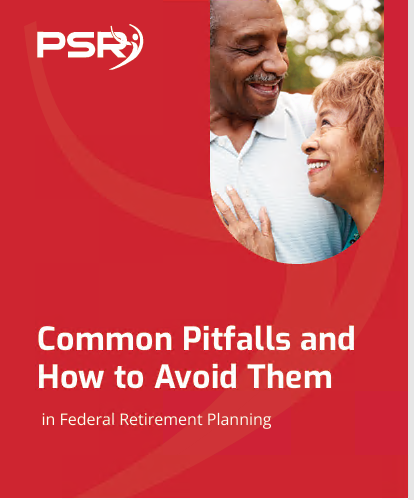Key Takeaways:
- Staying updated on federal retirement news is critical, especially in 2024, as several changes impact pensions, healthcare, and Social Security.
- Federal employees must act now to optimize their retirement plans, as deadlines for health benefits and pensions are fast approaching.
What You’ve Been Missing About Federal Retirement Changes in 2024
I’m not exaggerating when I say that 2024 is the year federal retirement got real. If you’re like most federal employees, the endless changes, updates, and jargon-heavy memos can make your head spin. But here’s the thing—ignoring these changes could cost you, especially if retirement is on your horizon. Whether you’re a few years away from retiring or already there, there are some major updates that you need to be aware of right now.
- Also Read: New Rules for Federal Employees in 2025: What You Need to Know to Stay Ahead
- Also Read: Seven TSP Fund Allocation Strategies Federal Employees Are Using to Strengthen Their Retirement Portfolios
- Also Read: Military Buyback for Federal Employees: Is It Really Worth It? Here’s What You Need to Weigh Up
New Healthcare Premiums for Federal Employees: A Wake-Up Call
The first big headline? Health insurance premiums are up. In fact, the average increase for federal employees is a hefty 13.5% starting in 2025. That means, by the time Open Season rolls around this November (November 11 to December 9, 2024), you’ll need to make some crucial decisions regarding your health benefits. If you’re sticking with the Federal Employees Health Benefits (FEHB) plan, brace yourself—those premium hikes aren’t just a prediction. They’re here, and they’re real.
Even more importantly, if you’re retiring soon or are already retired, coordination with Medicare becomes crucial. Retirees need to consider enrolling in Medicare Part B, or you could end up paying a lot more for your healthcare. The general rule for 2024 retirees is simple: you’ll want to weigh the cost of Medicare Part B against what you’ll pay if you stick only with FEHB.
The Push for Medicare Part B Enrollment
In 2024, one of the hottest topics for federal retirees is Medicare Part B. Here’s the deal—future retirees are required to enroll in Medicare Part B when they hit 65 if they want to maintain their Postal Service Health Benefits (PSHB) or certain FEHB plans. If you’re already retired and aren’t on Medicare Part B yet, check your status because certain plans may shift their coverage rules. You could be looking at penalties or increased premiums if you skip this enrollment window.
Now, if you’re still working but eyeing that retirement countdown, this is the year to start thinking seriously about Medicare Part B. Don’t wait until the last minute; the penalties for not enrolling when you’re first eligible can last for as long as you’re on Medicare. That’s a lifetime of higher costs that you could avoid with some smart planning now.
Social Security’s Windfall Elimination Provision: Still a Problem in 2024
Let’s talk Social Security—specifically, the Windfall Elimination Provision (WEP). As of 2024, WEP continues to impact thousands of federal retirees, particularly those under the Civil Service Retirement System (CSRS). WEP reduces the Social Security benefits of those who also receive a government pension from work not covered by Social Security (like many federal jobs under CSRS).
If you’re nearing retirement, it’s crucial to know how WEP might affect your Social Security check. While WEP can reduce your monthly benefit by as much as $498 in 2024, understanding how the calculation works can help you plan around it. And trust me, planning is everything when you’re dealing with your retirement income.
Thrift Savings Plan Updates: Why Your TSP Needs a Fresh Look
You can’t talk about federal retirement without diving into the Thrift Savings Plan (TSP). It’s a cornerstone for many federal employees, and in 2024, it’s more important than ever to give your TSP some love. The contribution limits increased to $23,000 this year, with a catch-up contribution of $7,500 if you’re over 50.
If you haven’t maxed out your contributions yet, now is the time to reconsider. Why? Because with the volatile market we’re in, having a solid retirement cushion is more critical than ever. The TSP’s C Fund has performed exceptionally well this year, boasting a 21.67% return so far. But, don’t let a good year lull you into complacency. Diversification and regular reviews of your TSP portfolio are key to staying on track for retirement.
Leave Benefits and Payouts: Cashing Out Correctly
For those of you sitting on a pile of unused annual leave, here’s some good news: your annual leave can provide a nice financial cushion. In 2024, federal employees retiring or leaving the service can still cash out their unused annual leave, receiving a lump sum payment based on the pay rate at the time of retirement.
But before you go rushing to cash out, consider how this might impact your tax situation. That hefty lump sum could bump you into a higher tax bracket, so it’s worth talking to a financial advisor about timing and tax-efficient strategies.
The Postal Service Health Benefits (PSHB) Program: It’s Happening
Now, let’s talk about one of the biggest changes for postal workers—2024 marks the transition from FEHB to the new Postal Service Health Benefits (PSHB) program, which will begin on January 1, 2025. If you’re a postal employee or retiree, you’ll be automatically transitioned into a PSHB plan unless you decide to switch during this year’s Open Season. The plans under PSHB largely mirror FEHB but come with adjusted premiums. While Congress and postal unions are involved in oversight to ensure a smooth transition, it’s still up to you to make sure you’re in the right plan for your needs.
This change won’t just impact your premiums. If you’re already on Medicare, you might see a difference in how your benefits coordinate. And if you haven’t yet enrolled in Medicare, you need to keep that in mind when evaluating your PSHB options.
FERS Special Retirement Supplement: Are You Eligible?
The Federal Employees Retirement System (FERS) Special Retirement Supplement (SRS) remains a game-changer in 2024 for those who are retiring before age 62. If you’re eligible, this supplement fills the gap between your retirement and when you can start claiming Social Security. It’s essentially an extra boost to your income while you wait for Social Security to kick in.
But here’s the kicker: it only applies if you retire under specific conditions, including minimum years of service. So, before you count on this supplement, check your eligibility. And if you plan to work part-time after retirement, know that your SRS could be reduced or even eliminated, depending on how much you earn.
Preparing for a Retirement That’s on Your Terms
Now that you’re up to speed on the latest retirement updates, it’s time to make sure you’re taking full advantage of the benefits available to you. Whether it’s reviewing your TSP contributions, reevaluating your healthcare plan, or ensuring you’re set with Social Security and Medicare, the best time to act is now.
Planning early and staying informed is the key to retiring on your terms, not someone else’s.













